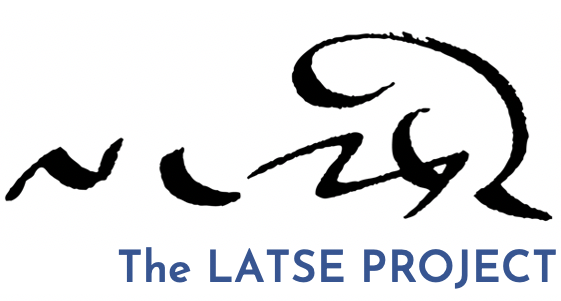Gendun Chopel Centennial Conference: Pema Bhum
Our library opened on March 8 of this year. In my speech at the opening ceremony, I discussed various meanings of the word latse and why we had chosen it as part of the name for our library. These remarks can be found in the first issue of the Latse Library Newsletter, which was distributed recently. The full name of the library is Latse Contemporary Tibetan Cultural Library. Today I would like to speak about the word “contemporary,” or “modern,” so that it helps us to better understand the nature of our library and also this event.
It seems that there are various ways to use the term “modern,” depending on the field to which it is applied, whether it is anthropology, sociology, art, or literature. But we didn’t look to these definitions in the case of our library. When we say “modern,” we are referring to a particular time, the people in our lifetime or the generation before, especially post-1950s.
As you all know, in Western countries there are some Tibetan Studies libraries and collections that focus on Tibet’s pre–twentieth century past. There has also been much research focused on Tibet’s past. However, after the 1950s, Tibetan society and culture underwent tremendous change, and yet there are very few people researching this period. For those few who do, there are few places that hold comprehensive resources for their research. That gap is the birthplace of Latse Library. To fill that gap is Latse Library’s goal.
Though you may live in modern times, it doesn’t necessarily follow that one’s thought is modern. Although Tibetan society has arrived in the twentieth century, the general way of thinking is still largely still in the eighteenth or nineteenth centuries. The development or decline of the life of an individual to a nation tends to all be explained with Buddhism. During the first half of the twentieth century, we had the first person to explain Tibetan society and culture in a different way, not through a religious lens. That person was Gendun Chopel. He was a modern thinker. He called it riksar (rig gsar), or “new science.” He was the first to try to understand science and to apply scientific method to look at Buddhism and Tibetan culture. Therefore, it feels only natural that a library focused on modern culture should celebrate an individual with a modern point of view, and to celebrate the centennial of his birth.
Moreover, it is an auspicious coincidence that the opening of this library earlier this year should coincide with the hundredth birthday of this unique individual.
We invited twenty-seven people from seven countries. All but three were able to attend. From when we picked up the phone to contact them till now, all gathered here, all the participants have graciously appreciated our plans and have supported this event. Some participants have shared ideas on how to conduct the proceedings, while others have supported us by bringing Gendun Chopel’s paintings, manuscripts, and personal belongings to exhibit here. The confidence we feel that this conference is well prepared comes primarily from all your support. We thank all of you and hope that this conference will be not only lively but also relaxed and happy.
There are three people who couldn’t come today. One is Gendun Chopel’s widow, Tsering Yudrön, and his student Rakra Rinpoche, as well as his great-grand nephew, Yungdrung Gyal. They wanted to come here very much and made great efforts, but it would have been too difficult a journey for Rinpoche and Tsering Yudrön, who are elderly, and Yungdrung Gyal encountered passport difficulties. Tsering Yudrön sent a videotaped message, and Rakra Rinpcoche also sent a letter, which is printed in the program. Yungdrung Gyal has generously lent us belongings of Gendun Chopel, which are otherwise kept at his estate, as well as his original writings, paintings, and drawings to put on exhibit here. Of course, it would have been more wonderful if they could have joined us.
Once we announced this conference, we right away felt that we must put together an attractive program. Many people have called or e-mailed to ask us about the conference. And many people have come here today. Take a look! There are two types of chairs in this room. The sixty yellow chairs are specifically for events in this room, but the forty black chairs you see are from our Reading Room upstairs. Because so many people registered for the conference, we had to bring down an additional forty chairs. Some people have come from as far as Canada and Germany to attend the conference. For them to be here is a big show of support for us. We believe that you came from a distance to find out more about this unique person Gendun Chopel, and I hope this wish will be fulfilled by the conference, and that you also enjoy yourselves!
Lastly I wanted to thank the Gendun Choephel Artists’ Guild in Lhasa. The thirteen members of the Guild each painted a portrait of Gendun Chopel, and sent the canvases to New York. One of these portraits graces our meeting space, and the remaining twelve are hung as an installation in our upstairs Reading Room. You can take a look during the break. We recognize that these paintings not only enhance our conference, but are also a meaningful acquisition for our library. These artworks perfectly complement our space, as well as the nature of the library. Our heartfelt thanks to the artists.
